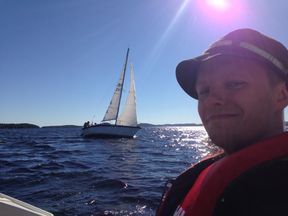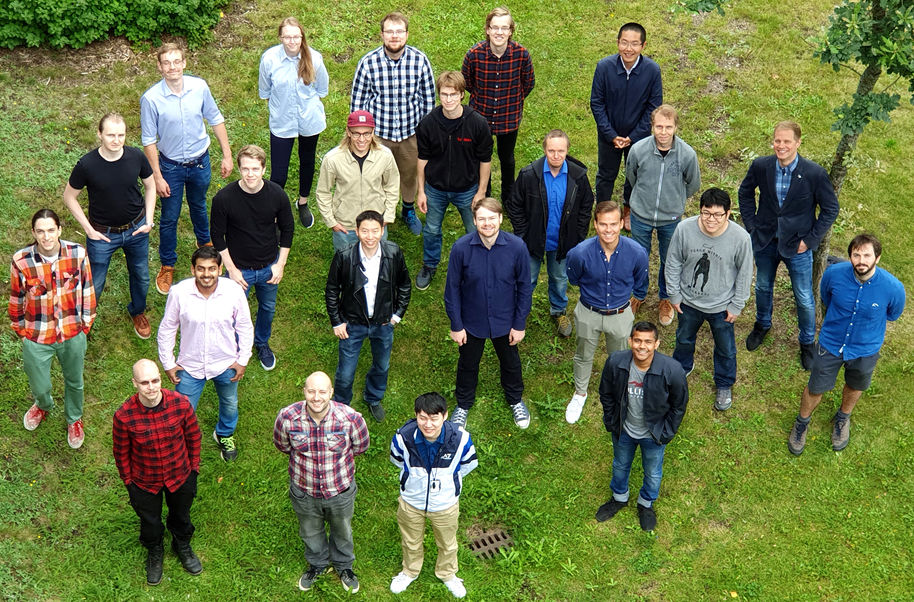Valtteri Lahtinen's piece selected as top mathematics article

Aalto University Research Fellow Valtteri Lahtinen published a mathematics in 2020 together with Tampere University researcher Antti Stenvall. Springer Nature selected it as one of the top six mathematics articles of 2020.
‘In my research I combine applied physics with modern mathematics. The mathematics used in the research can be applied to the design, development, and modelling of losses of superconducting quantum circuits; and to the analysis of the models of the logic of quantum computation’, Lahtinen says.
The research uses an area of mathematics known as “category theory” in a new way. Category theory, which originated in the 20th century, deals in an abstract manner with mathematical structures and how they relate to each other.
‘Category theory was developed for mathematical research, and applying it is still rare. However, the frame of reference can offer tools and unexpected approaches to engineering sciences and physics.’
Lahtinen joined Aalto University in 2019 after leaving Tampere University. Meanwhile, computational software utilizing algebraic topological tools intended for modelling superconductors made way for quantum computers in Professor Mikko Möttönen's research group for Quantum computing and devices.

Hockey, traditional knowledge, and sailing in addition to research
Lahtinen has also done research at the University of Montreal and Boston University, whose research cluster he found to be rewarding – there were interesting lectures every day.
‘I am a hockey fan, and I had great experiences in that while I was abroad. I went to see dozens of games in Montreal and Boston. In Montreal everyone was crazy about Saku Koivu and wanted to talk about him. Occasionally, the research was inconsequential.’
Lahtinen has another, very traditional hobby. He brews sahti, a traditional ancient Finnish beer. His grandmother and the aunt of the grandmother did it, and the knowledge and tradition were passed down through the generations.
‘Sahti has been made for a long time, possibly for thousands of years, on the shores of Lake Päijänne. I have a sahti trough that my grandfather made himself. It is made of a wooden log in the shape of a boat. I brew sahti for important celebrations that mark the year, and I have been thinking about doing it professionally sometime in the future.’
Lahtinen starts the production of sahti by making the mash and fermenting it, after which it is kept cold for a couple of weeks.
‘Brewing sahti is analytical, just like research. But as it is based on traditional knowledge – nothing in the process is changed. However, when brewing traditional beer, different kinds of experimentation are possible.’
Lahtinen also thinks about physics when he goes sailing on Lake Päijänne, but not while he is in the boat.
‘Manoeuvring the boat is done by intuition, but between sailings, I think about physics. Boating is physics to a very great degree.’
The research was performed under the Finnish Center of Excellence in Quantum Technology (QTF).
Further information:
Read more news

DeployAI Partners Gather for Heart Beat Meeting in Helsinki
The European DeployAI project's partners gathered for the Heart Beat meeting hosted by Aalto University Executive Education in Helsinki.
Professor appointments at the School of Business
Prottoy Akbar, Pablo Warnes, Erkki Vihriälä and Christoph Huber will start in their new positions on 1 August 2024.
Anastasia Koptsyukh and Ewald Kibler have been awarded Best Paper Award 2023 BCERC
They have been awarded the Best Paper in Social Entrepreneurship by the MEANS Center for Entrepreneurship Studies of Illinois State University and Babson College